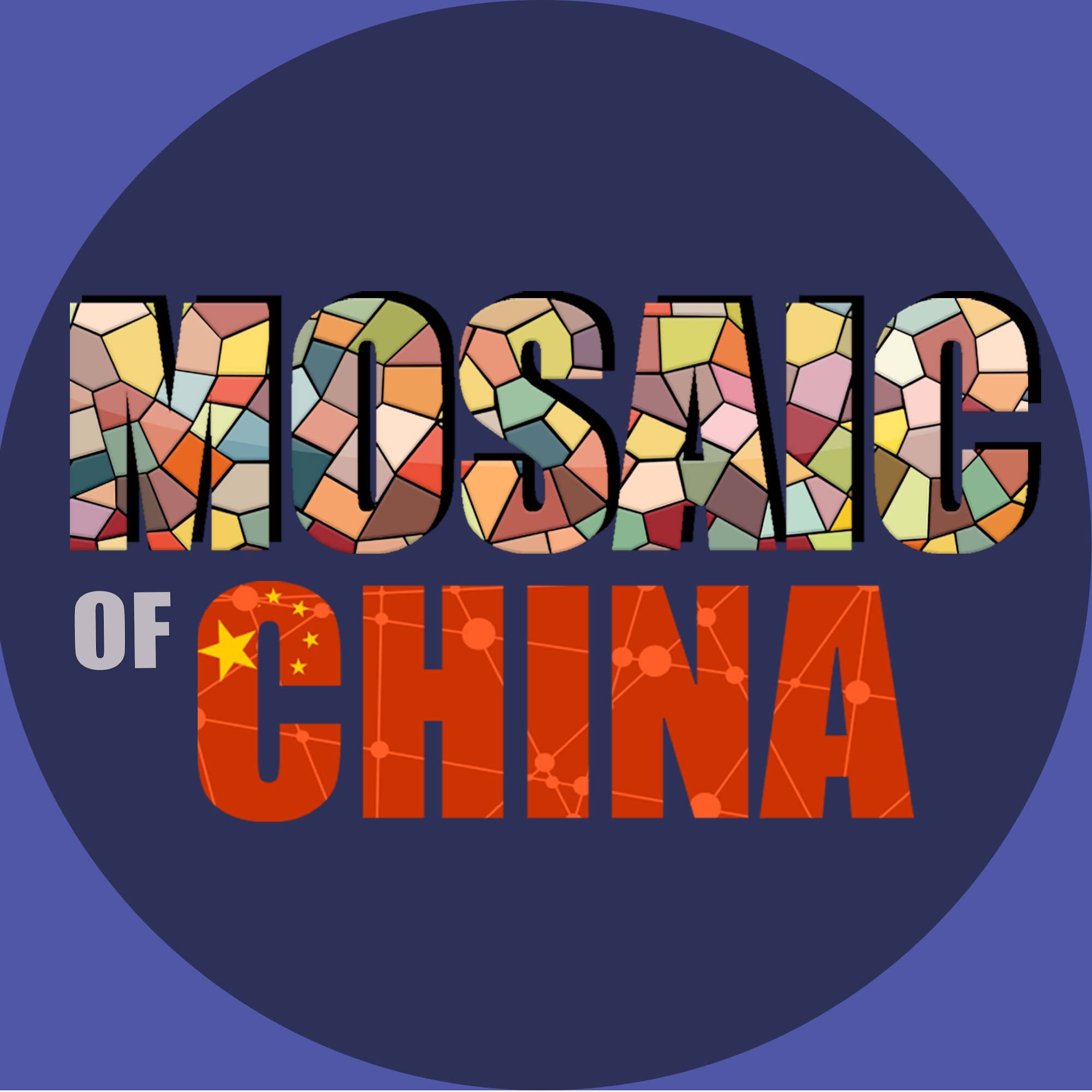Season 01 Episode 16
Episode 16: The Urban Artist
Nini SUM - Independent Artist, IdeaBeats
Original Date of Release: 10 Dec 2019.
Today’s interview is with the artist Nini Sum. We talk about her life and work as the co-founder of IdleBeats, the first independent screen print studio in China, as well as her take on artistic expression and the arts scene in general in China.
You’ll notice straight away that she has a very hypnotic way of talking, so this episode should be a nice, slow and relaxing one.
To Join the Conversation and Follow The Graphics…
View the Facebook Album for this episode. Alternatively, follow Mosaic of China on WeChat.
To view the images below on a mobile device, rotate to landscape orientation to see the full image descriptions.
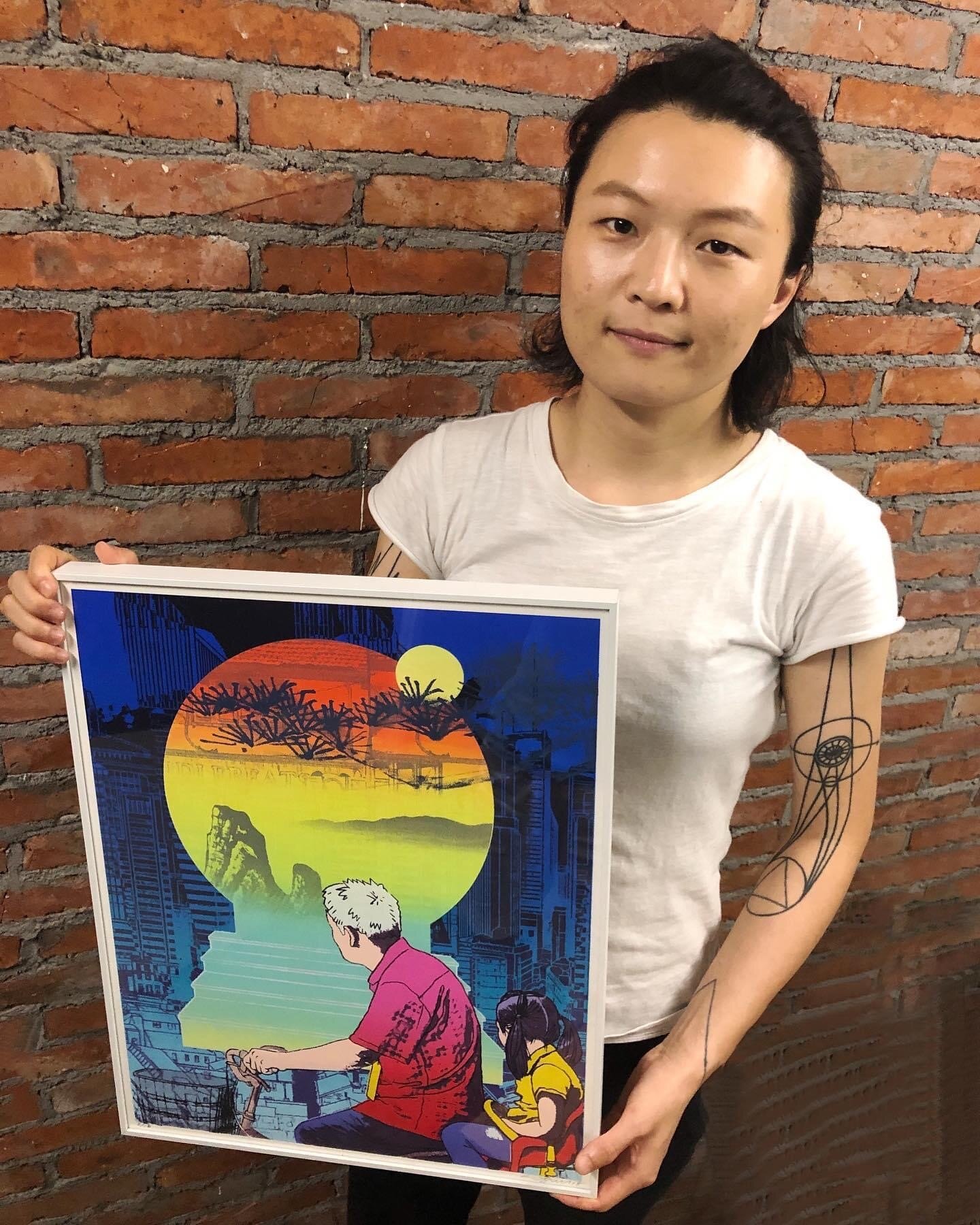
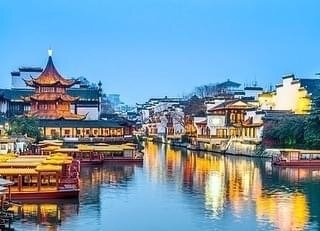
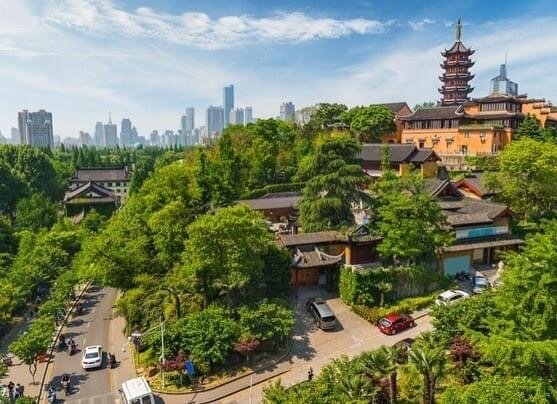

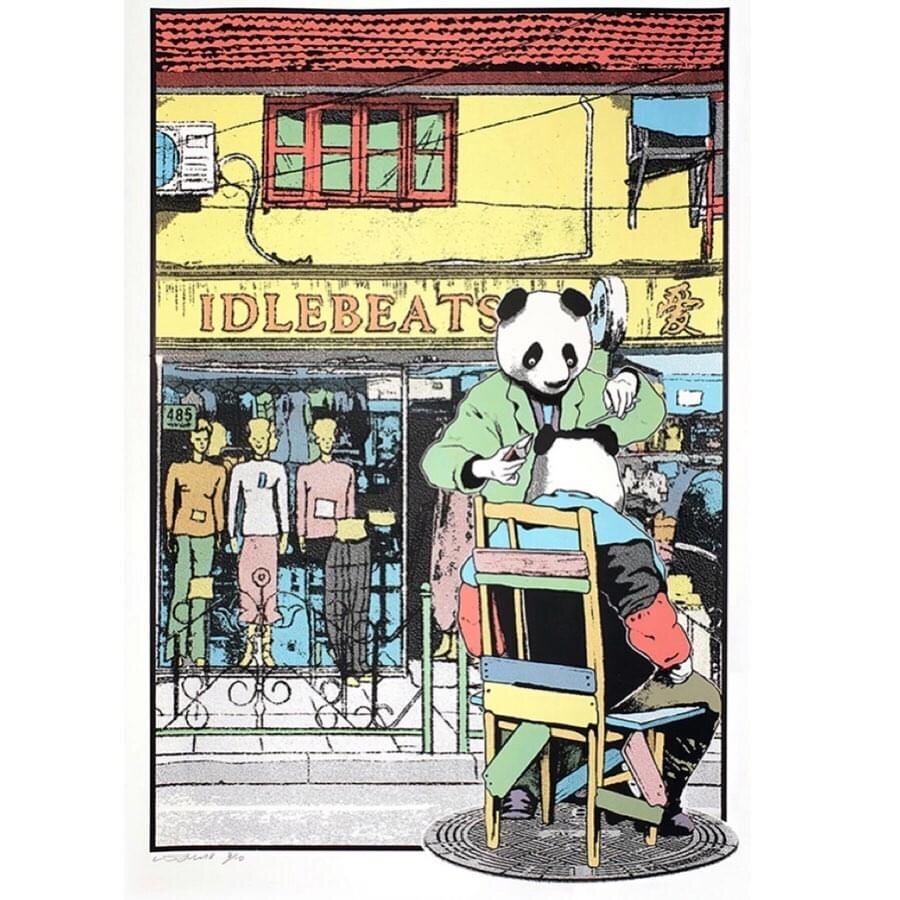
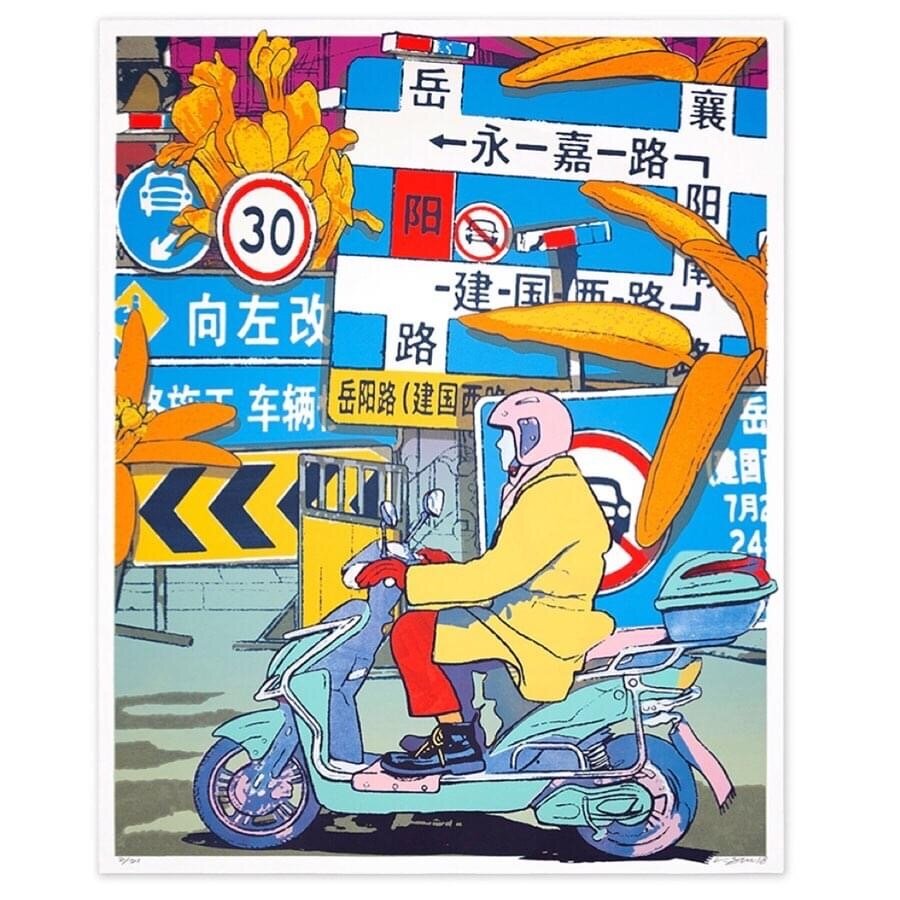

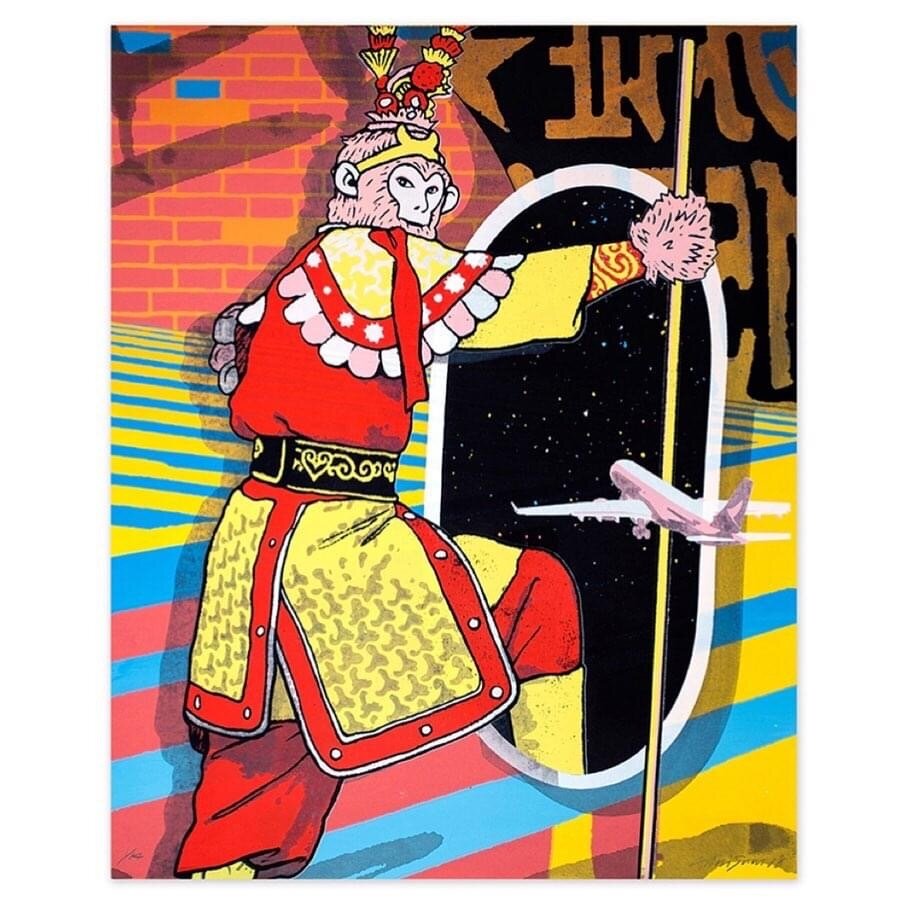
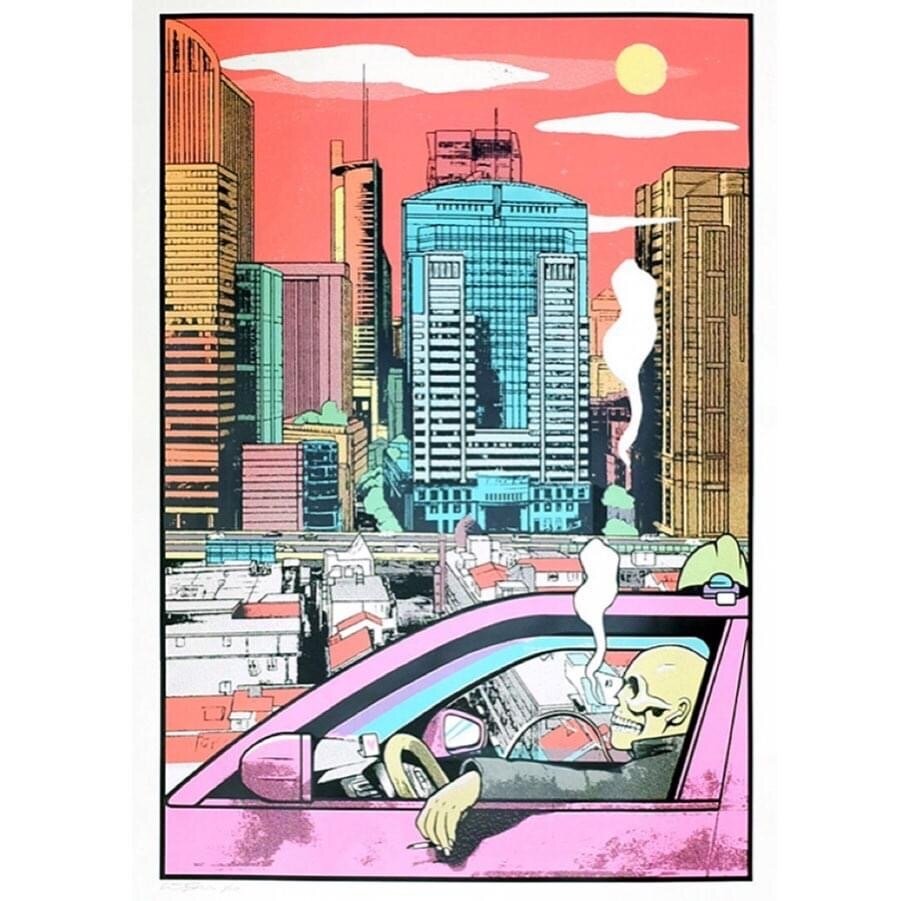
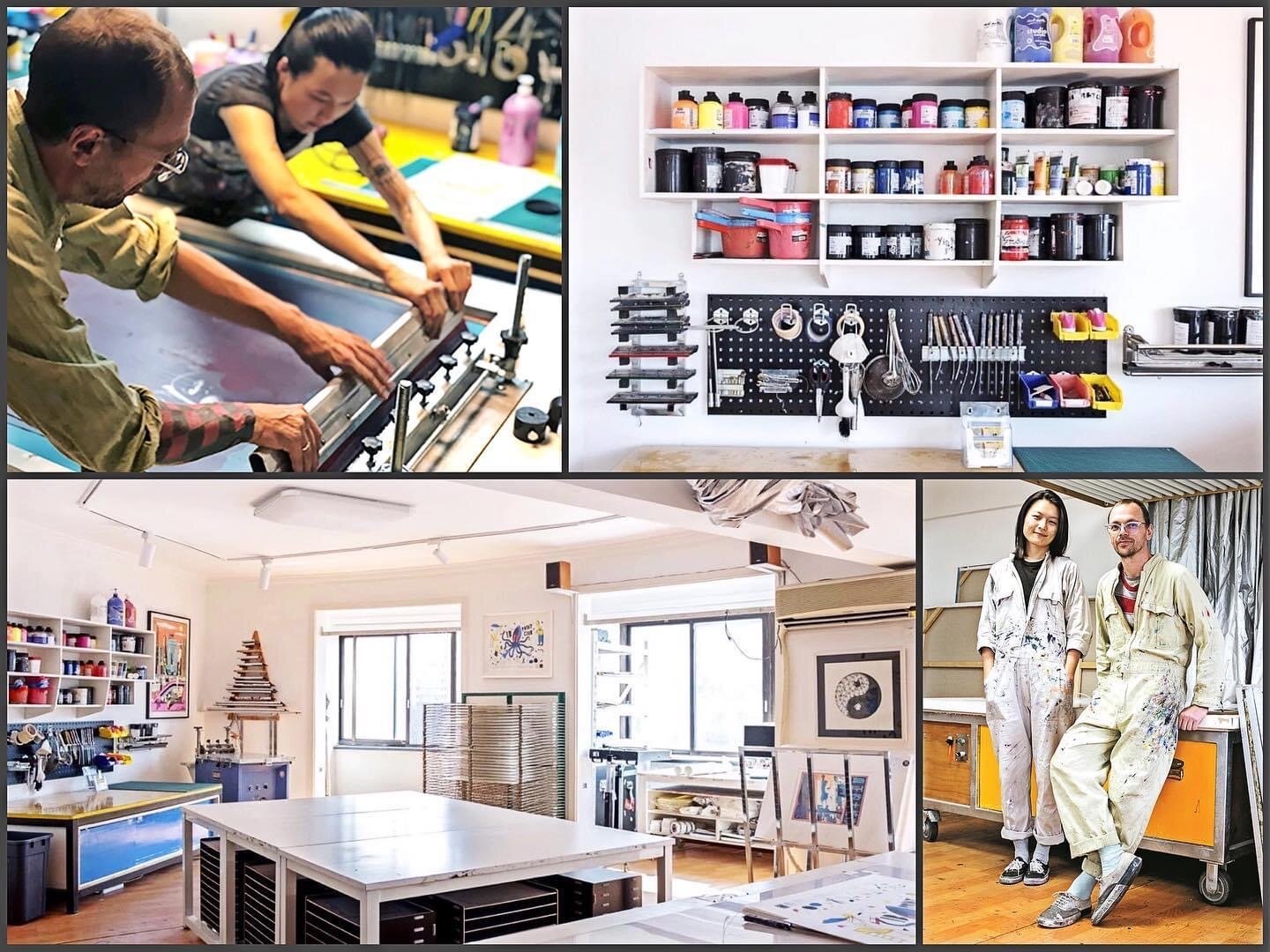
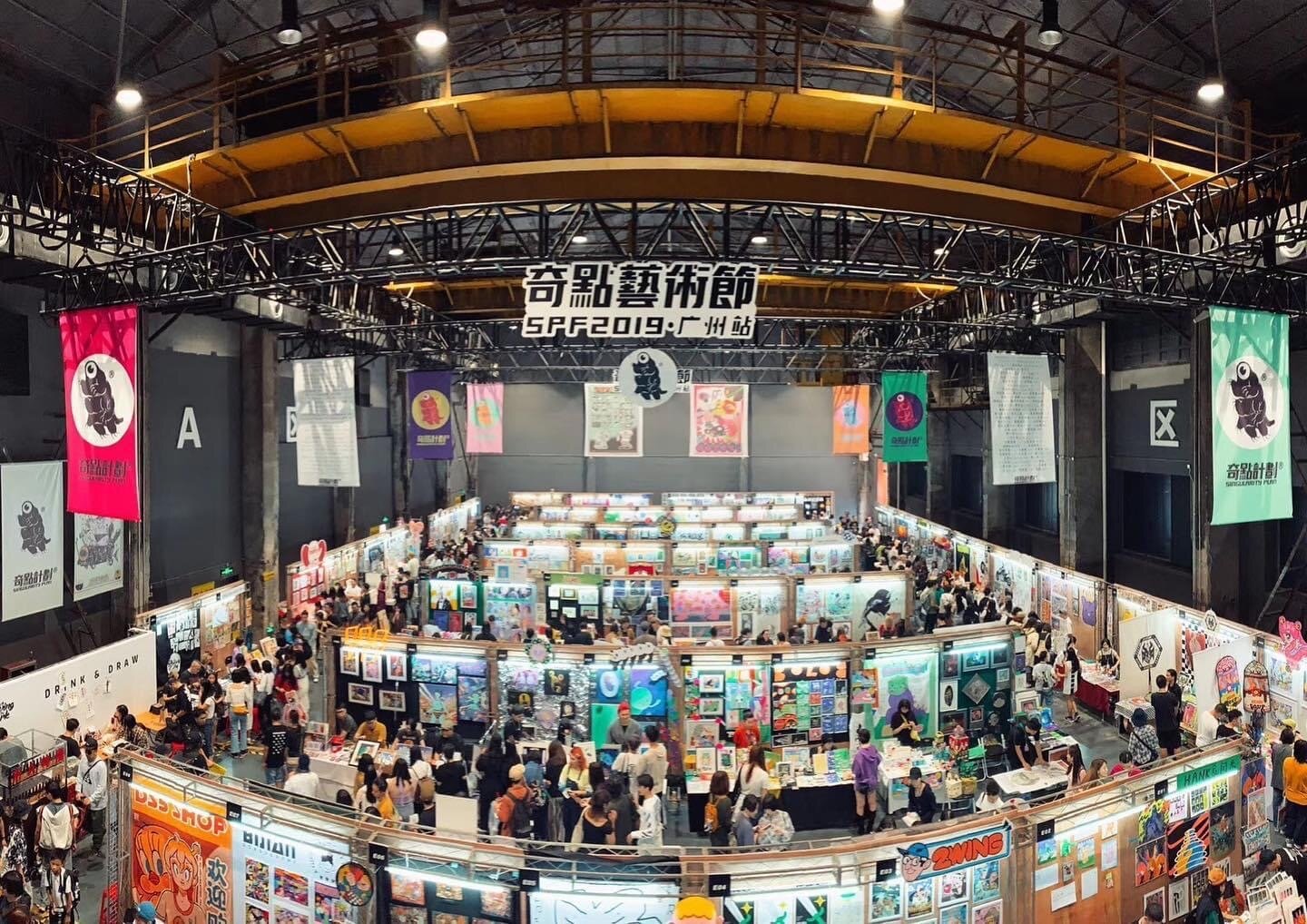
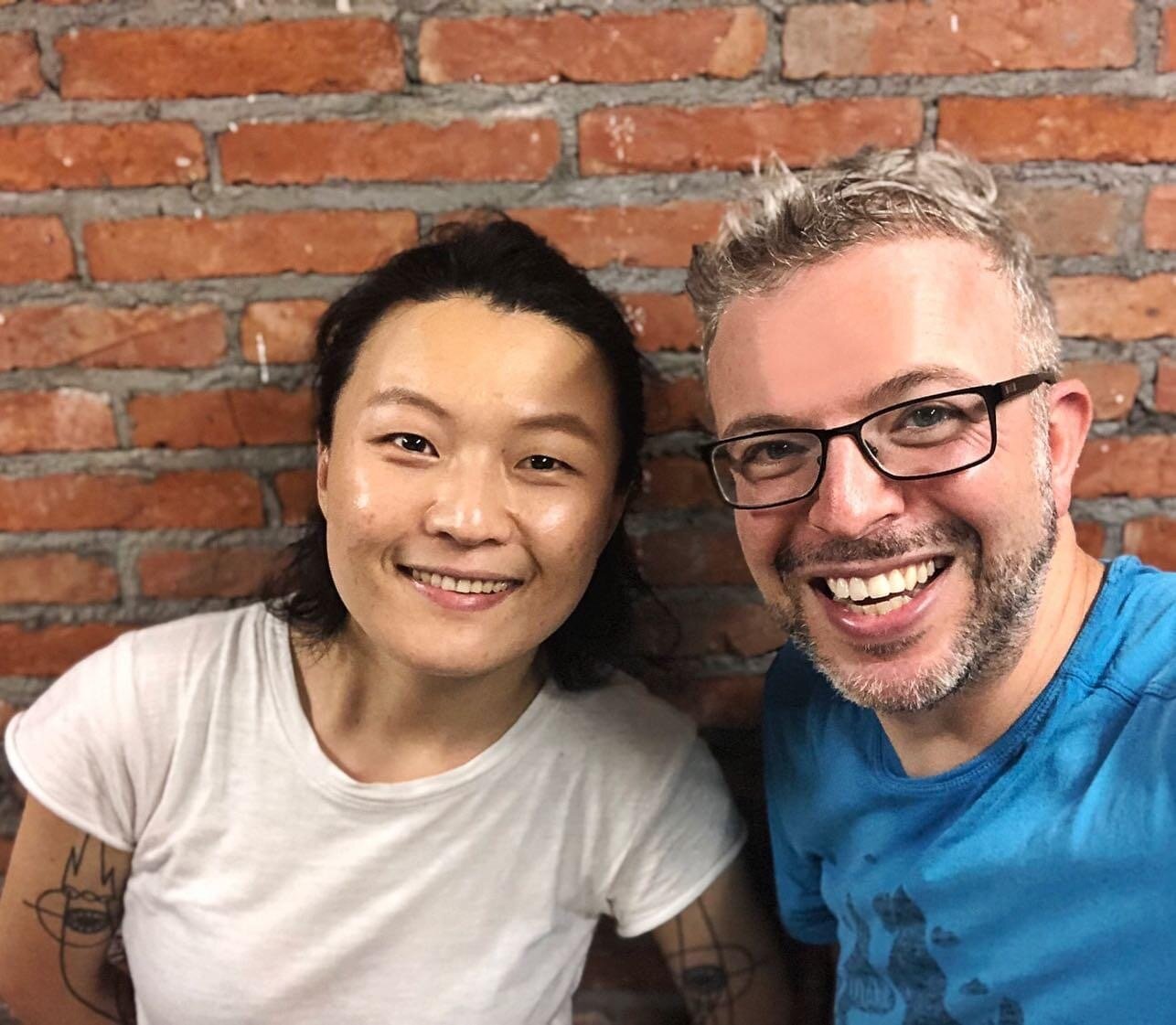
To Listen Here…
Click the ▷ button below:
To Listen/Subscribe Elsewhere…
1) Click the link to this episode on one of these well-known platforms:
2) Or on one of these China-based platforms:
To Read The Transcript…
[Trailer]
NS: In Chinese it’s called 草泥马 [cǎonímǎ]. And people say it’s like me. I use this a lot.
[Intro]
OF: Welcome to Mosaic of China, a podcast about people who are making their mark in China. I'm your host, Oscar Fuchs.
I want to give a big thanks to the magazine That's Shanghai, for featuring the podcast in its online edition last week, and especially to Ned who did the interview. So in case there are any new listeners, welcome to you. I think the back catalogue of the podcast adds up to around eight hours. So all you have to do is stay up for one night, and you'll be all caught up. There you go, you're welcome.
Today's interview is with Nina Sum. We talk about her life and work as the co-founder of the first independent screen print studio in China, as well as her take on artistic expression and the art scene in general in China. And you'll notice straight away that she has a very hypnotic way of talking, so this episode should be a nice, slow and relaxing one.
[Part 1]
OF: Well, thank you very much for coming.
NS: Thank you for having me.
OF: I'm here with Nini Sum. And Nina is an artist, and also the co founder of IdleBeats here in Shanghai.
NS: Yes.
OF: Well I want to know all about that. But first of all, what is the object that you have brought in today?
NS: I brought in a screen print. So the name of this screen print is ‘Intergeneration’. So it's handmade print art. The main character is a grandpa, riding a bicycle, carrying his granddaughter. And they are looking through a traditional Chinese garden gate. And through this gate, you can see a gradient from the sunset, red to yellow, and to blue. And the background is actually the modern city. So it's a mixture of real and surreal elements. It's a fairy tale happening in the city. But also like a dream, that you can dream of the traditional Chinese ink painting scenery,
OF: Right. And what does this mean to you, this particular piece?
NS: This is how I see modern life right now in China. So you have a lot of daily life going on in the streets, with all these big buildings. But also everyone has a spiritual world. It's almost like an oasis in your heart. Then you can go maybe time travel, go back to the old days, or like a dreamland within your daily life.
OF: Wow. And your voice has a dream-like quality. So it's kind of making me almost go into a different world right now. Well, you mentioned this is screen printing. So what actually is screen printing.
NS: Screen printing is actually one of the oldest printmaking methods. So same like wood cut - like the Japanese 浮世絵 [Ukiyo-e] printmaking method - and also like etching, copper board printing, they're all printmaking techniques. But screen printing got quite popularised in the last century by these pop artists, like Andy Warhol. So it's basically using a piece of silk stretched on a wooden or metal frame. And you use photo exposure technique to expose one image onto the silk. So part of the silk is sealed by a photo emulsion, and some parts are through. So then you put some ink on it, and you press it with a squeegee, like a printing board. Then the ink gets squeezed through the silk, and forms a graphic. So each colour takes one screen. Then, for example, this print takes 14 to 15 screens to make. And it always comes in an edition. Because you print the first layer like 50 times, and the second layer again, and in the end, you get 50 prints.
OF: So for print like this, each different colour would be a different screen print.
NS: Yes. So it's almost like a manual Photoshop. But you do everything by hand. So maybe each colour is a little bit different, and the positioning is, is a little bit different. And sometimes I like to add some hand painting effect into it. So each one looks almost the same, but it has a human touch in it.
OF: Right.
NS: So this one maybe took me three, four days to make the whole edition. I think the edition is 16. Yeah, this is a very complicated one to make.
OF: Right. So tell us about IdleBeats.
NS: IdleBeats is an artist collective of me and my studio partner Gregor Koerting. He's a German artist. And we are the first independent screen printing studio in China. We found the studio in 2009. So 10 years ago, we've been running the studio here in Shanghai for 10 years now. So Gregor and I, we both make print art, and also do visuals for musicians such as album covers, or music posters. And recently, we do also public art. So actually it’s not really only limited to screen printing. But back in the days when we founded the studio, no-one was doing this. And also, we run a community screen printing space, also under IdleBeats. It’s called IB Print Club. We also work with brands, and also do commercial art collaborations. Actually I never really intended to start a screen printing studio, I never really thought like that. It's just because in college, I got to know this art form. And I found it really, really fun to play with. And after college, I wanted to make some of my drawings into prints, so I could share them with my friends and family. Because they were always like “I want one of something you’ve made, and blah, blah.” And I was making oil paintings, but with oil paintings, I cannot give you one because there's only one piece. That's why I thought “OK, maybe I will try with screen printing, then I can make an edition, and share with other people”. So I just got some equipment and made some prints and also T-shirts and tote bags. So those also can be screen printed. Then once I started doing that, I found out actually people were really curious about it. So 10 years ago, actually, not really too many people knew what this art form is, especially Chinese kids, they were super curious. Then, we also got contacted by a music club - an underground music club - called Shelter, in Shanghai. So I started making like music poster art. So it was just really a fun game to me.
OF: So when I think about screen printing as an art form, it has a kind of underground edge to it. Like, has it always been a little bit subversive? Or is it quite mainstream?
NS: Actually it’s pretty divided. So actually, there were some factories existing already in China. And their job is to help the established fine artist make duplications, like copies, of their origin works. For example, if I'm a super famous artist, I make an oil painting, then I would hire a print factory to make it into a screenprint edition that I can sell and make more money. But we use it more for independent art output.
OF: So how easy is it for someone to come in from scratch, and to make their own artwork?
NS: So within two hours, actually, you can turn one simple graphic into a screen print. It’s actually quite an easy way, the entry level is pretty low. That's why it's such an art form for everyone. Not just for the élite, where you have to go to art school, and learn art history, or you know how to paint well. No, screen printing is really for everyone. So people will come to IB Print Club for the workshops, they can be like “OK, yesterday I made a doodle drawing and I want to make it into a T shirt”. Or “I took a photo of my girlfriend. I really like it, can I make into a print and give her like a present?” It's all doable. Yeah.
OF: That's great. And so how would you describe the independent art scene in China right now?
NS: In the recent one or two years actually, I am really excited about the independent art scene in China. Because when we started doing this 10 years ago, we hardly can find a crowd who appreciate this kind of arts. It was mostly expats to be honest, people who appreciate this art and who would really buy it or hang it in their homes. Most of the Chinese, they either go for the fine art market to buy super expensive arts; or they go to IKEA or even like a street shop to buy those cheap, mainstream, just bad-quality prints. But now in recent years, you can see there are many art fairs happening in China. Like art events. I recently went to one in 成都 [Chéngdū], it’s called the Singularity Art Fair. I met so many young artists there, they are showing their works and in all kinds of wicked forms. I just feel like the young people, younger generation, they have the eagerness to express themselves and to make things. And there are also people who are bringing all these people together, like the host of the art fairs. And also different book fairs are also happening now, not only in China, not only in Shanghai, but also in Asia, like in Tokyo, in Seoul, even in Bangkok, in different regions. I feel like it’s really alive, this independent art scene.
OF: That's great to hear because often life in China, it can be quite restrictive. Do you feel any pressure in that regard? Or is it mainly positive?
NS: Definitely, you definitely feel that, especially if you're a content creator. But I also think the way of expressing one's thoughts… Actually, China is also different to the West, it’s never really like, provoking, or a very extreme way of expression. In that way, actually I feel like if you compared to 10 years ago, people are way more daring to express themselves and be more creative. Definitely.
OF: Right. You're not the first person who said that. I think if you come from a Western perspective, you're used to art being very confrontational and very, very loud and ‘out there’. It can be very challenging. But I think you do have the same style in China, but it's just a little bit more subtle. And it's more about the nuances, right?
NS: Yes.
OF: And so you mentioned that around Asia, there are various independent art scenes, from Japan down to Thailand. So do you do any collaborations outside of China?
NS: Yes, actually, for the past years, we've been doing a art exchange project called Tale of Two Cities. It’s a dual city exhibition, where every year, we choose one art studio that has a similar practice like us, then we invite them here to China to have an exhibition with us. And we also go to their cities. So it's like a two-city exchange. We've done it for four years already, with studios from Paris, Berlin, Cambodia, and also Groningen in the Netherlands. So it's four groups of different artists.
OF: And how was the experience in Cambodia?
NS: Actually, Cambodia was the one that gave me the strongest impression, because people there are not like in Europe, they are working under extremely hard conditions, they don't even have enough water pressure, and it's super crazily hot there, and they don't have air-con. But they build everything on their own, even the exposure box was built just by several pieces of wood, and they put some lamps in it. But they still make beautiful and powerful prints. That's why the experience was really memorable.
OF: Maybe it just goes to show that making art is primal. It's something which you have to do. And it doesn't matter if you have the best technology, or the or the best equipment, it just has to come out, right?
NS: Yeah, exactly. I think that's also the charm of screen printing. You can really do it, if you want to. So you don't need to, like I said, have a higher education, or a really fancy art studio.
OF: So how has your own personal art evolved over the years?
NS: After doing oil painting for several years, I found actually, it's more like me talking to myself and expressing my own thoughts, in my own little world. But after I moved to Shanghai, actually I feel like China is changing every day, and I don't want to stay in my own little world any more. So I started doing other other kinds of projects, and using screen printing. Because of this medium, I can get to know more people, and to do classes, and do collaborations. And that's why the work now after these years, is more about the society. Before it was more surreal and dreamy, but now I try to keep this kind of surreal feeling but also adding more like real-life happenings into it. Like the life that’s really happening around me, not just the spiritual world.
OF: Do you compartmentalise your life between art, and then outside you don't do much art? Or what's your free time like?
NS: Actually, for 10 years I've been living as a full-time artist, there's not really a line between free time and, and work anymore. So sometimes, for example, if you watch a movie, and this movie can be inspirational, then right after watching it, I will make a sketch or something. So it's really fun. It's already part of the creation, it’s already part of life. And sometimes creation is also relaxing.
OF: And where does that come from? Like, did you come from an artistic background?
NS: Not at all. My parents are both working-class, working in normal ordinary jobs. Yeah. Actually, this is the only job that I feel attracted to. I was also working in an office. But if working towards a commercial purpose, I just feel really vain inside. So that's why making art is more like a therapy, kind of thing. So every day, I feel like it's not wasted. I'm working towards a purpose that is however meaningful to me. That's why I could live happily every day. If I do anything else. I don't think I'll be as happy as I am right now. I just want to be able to create, and work on interesting projects, and go to different places, and get to know other interesting people like you.
OF: I'm not sure… If you saw my art, I'm not sure we would be friends.
NS: I’m quite curious now.
OF: No, I'm not being modest, I've never been able to draw.
NS: But you know what, you don't need to draw well. So I had a had a discussion with this French studio. Both are very philosophical thinking artists, they make really nice drawings, and they would draw blindly, or they would draw with left hands. So it's all for breaking the normal rules of what a good drawing is. Maybe you just draw blindly, but you come up with like an abstract painting. I was really inspired by them. So maybe your drawing is like masterpieces, you just don't know it.
OF: OK, I'll do it. And then I'll be a famous artist for all to see. Well, thank you so much Nini, that's great to find out all about what you're doing. Well now let's move on to Part 2, which are the 10 questions.
NS: Yep.
[Part 2]
OF: So, ready?
NS: Yes.
OF: Here we go. Question 1, what is your favourite China-related fact?
NS: I don't really know if this is a fact. But I like how surreal China is, and how fast it changes. And how alive this place is.
OF: Can you think of any examples?
NS: Like when I was young, even a can of Coca-Cola is precious. I remember this, my parents would take me to the street, and also some kind of field trip. And I would beg them to buy me a can of Coca-Cola, this would be a rare chance maybe for the whole season, I could get a sip of that. But now if I go to a supermarket, I see all these products on the shelves. I'm just like "Where is this place?” It's just a short, maybe 10-20 years, and it has changed so much. New things are popping up all the time, it’s really surreal living in this place.
OF: Well, you mentioned the word ‘surreal’. So I wonder, is that what you're trying to encapsulate in your art?
NS: Yes. And I want to keep that feeling, but also add a poetic twist.
OF: Do you have a favourite word or phrase that you'd like to teach other people in Chinese?
NS: Yes, it's called 自然而然 [zìrán’ érrán]. It's like very Zen, and self-satisfying, and natural flow. So I think in oriental philosophy, there is something that's not really describable with words. And sometimes you cannot force things to happen, but rather feel the feeling, and go with the flow, and be true to yourself.
OF: Yeah, when you said “go with the flow”, I think that's the closest thing that I would describe it as. Like, “go with the natural flow”.
NS: Yes.
OF: OK. I'm going to start to use that. Thank you. What is your favourite destination within China?
NS: I will say my hometown.
OF: Which is…
NS: Which is 南京 [Nánjīng]. Because I really like going back, and visiting my parents, and stay with them. It makes me really, really calm.
OF: What do you think is the best thing about living there, not as a tourist.
NS: Actually, Nanjing is a very slow city. And there was an ancient capital of The Six Dynasties. So it kept a lot of great walls from the 明 [Míng] Dynasty, and 朱元璋 [Zhū Yuánzhāng] especially. So it's a very historical place. And it's very green, because it has a mountain in the heart of the city, and a big lake. So if you get out of the train station, you see this big lake. And when I was little, I always pedalled boats on it, and also went to the mountain a lot, just for climbing, and you can go to the astronaut centre on it. So 南京 [Nánjīng] is a place I think that’s really good for living a chill life.
OF: Lucky. If you left China, what would you miss the most, and what would you miss the least?
NS: I would miss people most, like my parents and friends. And the least would be construction noise. Damn, it's just too much.
OF: But actually I've got to a point now where I just focus it out. I didn't hear it very much.
NS: Ah but it’s everywhere. Sometimes, like in my studio, you can hear this from a building far away. I go home, and it’s 11pm at night, and somebody's sawing wood out there. And I literally jumped off the stairs, and I was shouting at them, like “What do you think you're doing? Grandmas and kids are sleeping, I'm going to call the police!” And they're like “Why do you make it a big deal?” People are so ignorant about this. This is the thing I hate the most.
OF: Yeah.
NS: It’s crazy.
OF: What about the next question, is there anything that still surprises you about modern life in China?
NS: Yes, actually recently, I got invited to do a very interesting new project. And this surprises me, because I wasn't expecting they would come to some artist like me. This is a VR project. Yeah.
OF: Where's your favourite place to go out, to eat or drink or just hang out?
NS: Actually, my friend’s studio. So I have several artist friends, they all have studios around my studio’s area, pretty downtown. And I go in there, see what they're making recently. And also sometimes invite people here to my studio, having a beer.
OF: Right. It's funny, you're never really far away from art. Even when you're hanging out, you’re hanging out around art.
NS: Oh my god, it's terrible.
OF: What is the best or worst purchase you've made in China?
NS: Best purchase. I bought some artist friends merchandise. Like, they sculpted some candles. So it's like a sculpture, but it's also a candle, then you can burn them, and the sculpture just melts. I think the idea is really cool. It's also something that you can just buy easily, it’s like 100 快 [kuài] or something. So this is what I'm talking about, these new ideas. And people are also adapting arts into everyday life, and making products. And they make that, and sell that, and they have more money to go back and make more ideas. And I like buying stuff like this. Yeah.
OF: Great. What's your favourite WeChat sticker? OK, can you describe this?
NS: I don't know, this is… In Chinese it’s called 草泥马 [cǎonímǎ]. It’s like his kind of… I don't know what kind of animal this is, like a sheep or something.
OF: I think it's a llama. Is it a llama?
NS: Oh yeah yeah, I think it’s a llama, that’s the name of it. And I just like his face. It’s like just chewing and like “Eh?” He just turns into like “Whaaaat?” It's really silly. And people say it’s like me. So I use this a lot.
OF: What is your go-to song to sing at KTV?
NS: Linkin Park. Yeah, because I don't really go to KTV. The last time I went there was maybe several years ago. And when I was in high school, Linkin Park was really popular. So it was like me and some classmates, and they are doing the rap parts, and I’m doing the singing parts. It’s a long time ago.
OF: I kind of want to see you do that now. You're very softly spoken, but I can see that you have a punk side to you that would come out pretty strong.
NS: Yeah.
OF: And finally, what other China-related media sources or news outlets do you rely on?
NS: Before there were a lot of art magazines, like ‘Art World’ or something. And you can see the latest exhibitions. But now it's more like people are sharing their information in their Moments on WeChat mainly. Yeah.
OF: Right. Well, thank you so much, Nini.
NS: Oh thank you, Oscar.
OF: And my final question before you leave - it's the same question I ask every guest - who do you recommend that I interview next?
NS: I would recommend Zovi. Zovi is a friend who is a comic artist. And she is also in a band. And she does this amazing comic art group called ‘Shaving in the Dark’. And she is very enthusiastic about putting a community together to do creative output. And she's bilingual, really smart, really talented. So I think you should have a chat with her.
OF: Oh, that's great. I actually ran into her because I was doing a presentation. And she was in the audience doing live art. As I was doing it, she was drawing it, it was so impressive.
NS: Yeah, I think she does that every day, like her job. But yeah, she's really smart and really fast.
OF: OK, I can't wait to talk with her. Thanks so much, Nini.
NS: Thank you.
[Outro]
OF: So the first thing I would like to point out is Nini’s WeChat sticker. You can see the llama on Facebook and Instagram, just search for ‘mosaicofchina’ there. And I'm always trying to encourage people to comment about their understanding about all things Chinese in the community on WeChat. But this time, if you know the double meaning of this sticker, then maybe keep it to yourself just this once. To join that community, please add me on my Wechat ID: mosaicofchina,* and I'll add you to the group there. Apart from that, you can also see Nini's object, which was one of her prints. And there are another couple of examples of her work there too. There are some photos of the studio IdleBeats, with her collaborator Gregor. And there's an image from the Singularity Fair in 成都 [Chéngdū] that she mentioned. It's a lot bigger in scale than I was picturing in my head. And finally, there are a few photos of her favourite place to visit in China, her hometown of 南京 [Nánjīng].
Before I leave, mentioning the historical city of 南京 [Nánjīng] offers me the excuse to give a long overdue shout-out to The China History Podcast, or ‘CHP’, presented by Laszlo Montgomery. If you heard Episode 08 with Vy Vu, she mentioned that there's a history podcast, which is one of our favourite sources of information, but we didn't name it. And if you listened to last week's bonus episode that I recorded with Shannon Martin, I also mentioned a great history podcast, and again I didn't name it. Well, it’s this one. Chinese history is extremely daunting, there's this dynasty and that dynasty, and this Emperor and that battle. If you're like me, you'll have no clue where to even start. Well, Laszlo’s podcast is where you should start. And if I sound a little bit flustered while saying this, it's because Laszlo is in the Mosaic of China WeChat community, which makes it all the more embarrassing that I haven't mentioned it until now.
Mosaic of China is me, Oscar Fuchs; extra editing support from Milo de Prieto, artwork by Denny Newell, and China support from Alston Gong. Next week's episode is a fun one, and it'll be the last one before the winter break. So I'll see you then.
*A different WeChat ID was mentioned in the original recording. That ID is now obsolete, and the updated one has been substituted.
